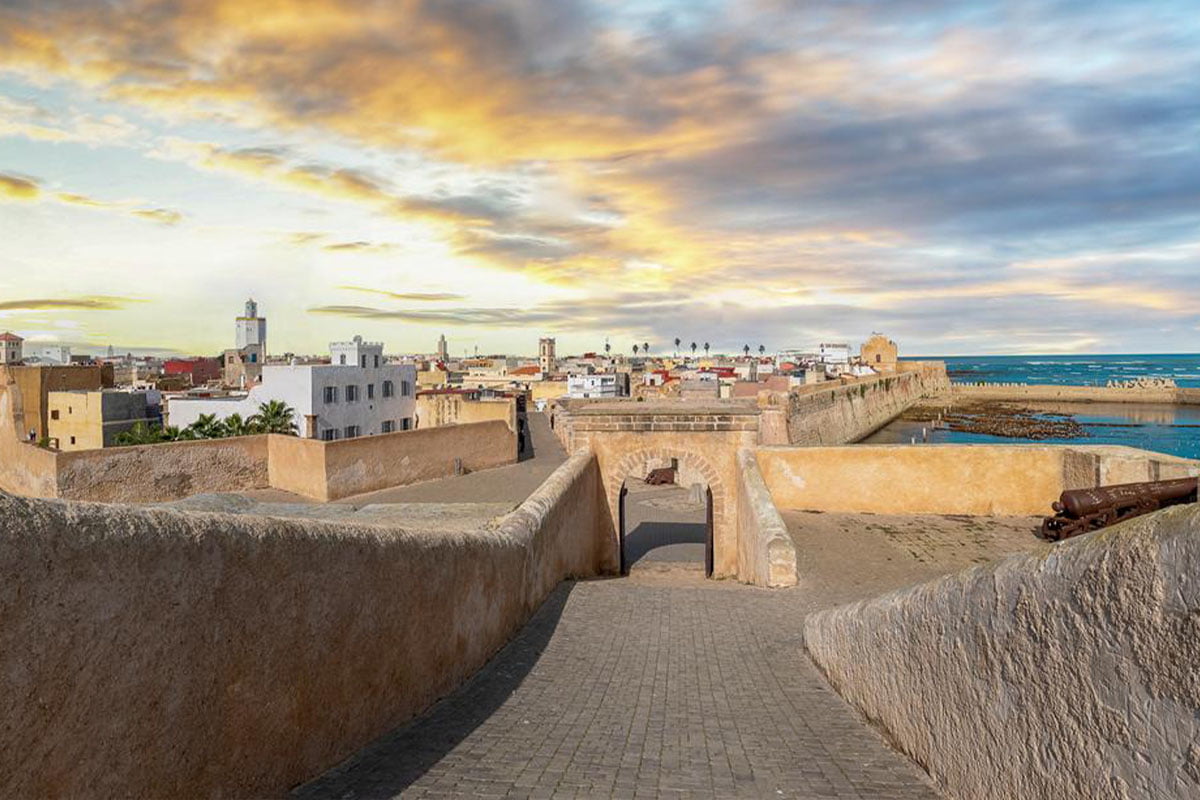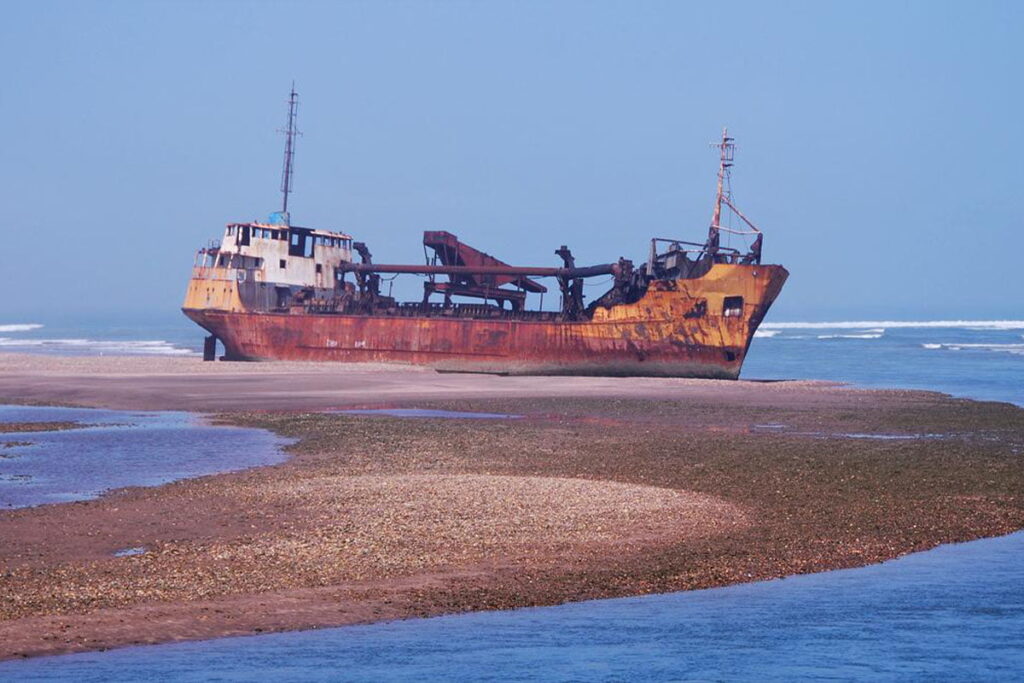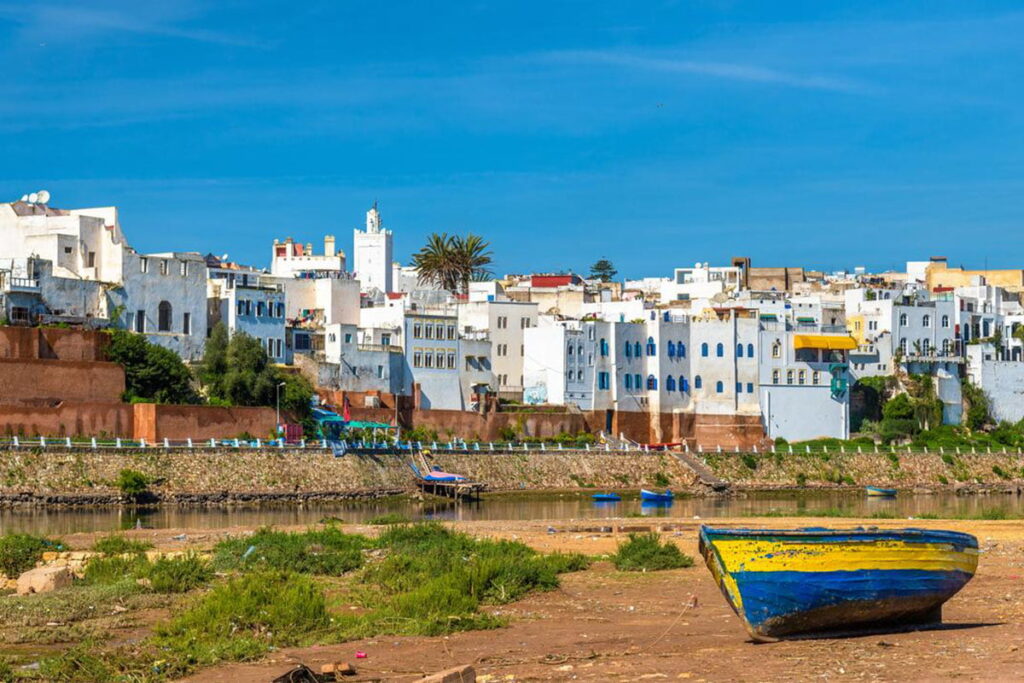
The enchanting history of El Jadida: a must-visit destination
El Jadida, originally called Mazagan, is a coastal Moroccan city that offers a unique narrative of historical layers shaped by both Moroccan and Portuguese influences. This captivating city, nestled along the Atlantic Ocean, traces its origins back to the early 16th century when it was established by the Portuguese as a fortification. This strategic establishment served dual purposes: controlling the sea routes along the African coast and acting as a trading hub. The city’s architecture and urban planning reflect a distinct European influence, creating a striking contrast against the Moroccan landscape.
Origins and portuguese influence


In 1502, the Portuguese set foundations in El Jadida, building one of their several fortresses along the Moroccan coast. This era marked the city as a key piece in the expansive Portuguese trading empire that stretched from Africa to the Far East. The architecture of El Jadida, particularly the fortress of Mazagan, was designed to withstand the test of time and war. It featured massive stone walls, robust bastions, and a deep moat, all reflecting the military engineering prowess of the Renaissance. These elements helped the city resist numerous sieges throughout its history. The Portuguese influence extended beyond architecture, impacting local customs and trade practices during their occupation.
The Cité portugaise: A historical marvel
The Cité Portugaise, the old Portuguese city within El Jadida, stands as a testament to Renaissance military architecture. Declared a UNESCO World Heritage Site, this area is the city’s historical heart. Visitors are particularly drawn to the Portuguese Cistern, an architectural marvel with its gothic arches and serene water reflections. This underground chamber, once a crucial water reservoir, now captivates visitors with its quiet, mystical atmosphere and its role in cinematic history, notably in Orson Welles’ “Othello”. The preservation of these structures offers a fascinating glimpse into the lives of the European settlers and their interactions with the Moroccan environment.
Transition to Moroccan control
The transition of El Jadida from Portuguese to Moroccan control began when the Portuguese evacuated in 1769, leaving behind their massive fortifications and a city rich in a blend of cultural influences. The Moroccan sultan, Sidi Mohammed Ben Abdallah, renamed the city to El Jadida, meaning “The New”. This period saw a gradual merging of Portuguese architectural styles with Moroccan elements, giving rise to a unique cultural and architectural hybrid. The city’s adaptation and evolution continued through subsequent centuries, reflecting the dynamic historical and cultural changes that have shaped modern Morocco.
El Jadida today: A cultural hub

Today, El Jadida stands as a vibrant city that seamlessly blends its historic past with modern Moroccan life. The city’s beaches are a major attraction, renowned for their beauty and offering a variety of water sports. El Jadida’s cultural scene thrives with numerous festivals and events, particularly the Moussem of Moulay Abdellah Amghar, which attracts thousands of visitors with its spectacular equestrian shows, traditional music, and dance performances. These cultural festivities not only enhance the city’s tourism appeal but also help preserve and celebrate its rich heritage.
Why visit El Jadida?
A trip to El Jadida is a journey through time, where history and modernity coexist beautifully. The city offers a diverse range of experiences, from exploring ancient fortifications and architectural wonders to relaxing on pristine beaches or immersing oneself in vibrant cultural festivals. El Jadida’s unique historical narrative, combined with its scenic landscapes and rich cultural offerings, makes it an essential destination for those exploring Morocco. It provides a quieter, yet equally enriching alternative to the country’s more frequented tourist locations, making it a truly must-visit destination for discerning travelers.
El Jadida: A coastal gem with historical richness
El Jadida, originally known as Mazagan, is a captivating Moroccan city that uniquely encapsulates the historical interplay between Moroccan and Portuguese influences. Located along the picturesque Atlantic Ocean, it started as a strategic fortification in the early 16th century by the Portuguese. This foundation served as a critical point for controlling sea routes and facilitated vibrant trade networks. Today, the city’s architecture and cultural landscape vividly narrate its historical evolution from a European outpost to a flourishing Moroccan urban center.
Portuguese beginnings and architectural legacy
In 1502, the Portuguese transformed the landscape of El Jadida by constructing a robust fortress as part of their global trading empire. The fort, known for its resilience, featured advanced military designs including massive stone walls, formidable bastions, and a comprehensive moat system. This era not only fortified El Jadida’s defenses but also infused it with distinctive European architectural and cultural nuances, leaving a lasting impact on the city’s character.
The Cité portugaise: A UNESCO world heritage marvel
The heart of El Jadida’s historical district is the Cité Portugaise, a remarkable example of Renaissance military architecture. Recognized by UNESCO, this quarter is especially famous for its Portuguese Cistern. This cistern, originally a water reservoir, now stands as a monument to the city’s past, drawing visitors with its gothic arches and reflective waters. The area remains a profound testament to the city’s layered history, illustrating the blend of European strategic interests with local Moroccan elements.
From portuguese hands to Moroccan reclamation
After the Portuguese evacuation in 1769, El Jadida transitioned under Moroccan sovereignty, with Sultan Sidi Mohammed Ben Abdallah renaming it “The New.” This era marked the beginning of a cultural synthesis, where the architectural prowess of the Portuguese era gradually integrated with traditional Moroccan styles. This transition enriched the city’s architectural and cultural fabric, creating a unique blend that continues to define El Jadida today.
El Jadida today: A thriving cultural and tourist hub
In contemporary times, El Jadida has emerged as a vibrant city that celebrates both its historical legacy and its modern Moroccan identity. The city’s beaches, known for their pristine conditions, attract visitors looking for leisure and adventure by the sea. Moreover, El Jadida’s cultural vibrancy is showcased during the Moussem of Moulay Abdellah Amghar, a festival that features traditional music, dance, and spectacular equestrian shows, highlighting the city’s dynamic cultural heritage.
A Visitor’s guide: why El Jadida should be on your itinerary
Visiting El Jadida offers a journey through a rich tapestry of history, where ancient walls whisper stories of bygone eras. The city provides a multitude of experiences—from historical exploration at the Cité Portugaise to relaxing beach days and vibrant cultural festivals. For those seeking a less trodden path within Morocco, El Jadida presents a compelling destination with its unique blend of history, culture, and natural beauty.
El Jadida: A blend of past and future
El Jadida not only preserves its historical narratives but also embraces a forward-looking perspective. It stands as a city that respects its past while actively cultivating a vibrant future, making it an essential stop for travelers eager to explore the depth and diversity of Morocco’s heritage. Whether you are a history enthusiast, a culture aficionado, or simply a lover of natural beauty, El Jadida promises a memorable and enriching experience.
Conclusion
El Jadida, with its rich tapestry of history and culture, stands as a unique testament to the resilience and beauty of Moroccan heritage. As a city that has seamlessly integrated its Portuguese past with a vibrant Moroccan present, it offers a unique window into the historical interplay of cultures. From exploring ancient fortifications to relaxing on sun-drenched beaches, El Jadida provides a diverse array of experiences that cater to all types of travelers.
FAQs
- What is El Jadida best known for? El Jadida is renowned for its well-preserved Portuguese fortifications, particularly the Cité Portugaise, and its lovely beaches that stretch along the Atlantic coast.
- Are the beaches of El Jadida suitable for swimming? Yes, the beaches are clean and safe for swimming, with several spots also popular for water sports like surfing and jet skiing.
- Is El Jadida a good destination for family vacations? Definitely, the city offers a variety of attractions suitable for all ages, from historical tours to beach activities and cultural festivals.
- How far is El Jadida from Casablanca? El Jadida is approximately 100 kilometers southwest of Casablanca, making it an easy drive of about 1.5 to 2 hours by car.
- What should not be missed when visiting El Jadida? The Portuguese Cistern, known for its architectural beauty and historical significance, is a must-visit. Additionally, exploring the ramparts for panoramic views of the Atlantic Ocean is highly recommended.
- What are the dining options like in El Jadida? The city offers a diverse culinary scene that includes traditional Moroccan cuisine, fresh seafood, and a variety of international dishes, catering to all tastes.
All Categories
- Actividades en Marruecos
- Adventure
- Aventura
- blog
- blog
- Camping salvaje
- City Tours
- country tours
- Desert tours
- Estilo de vida
- Excursiones de un día a Marrakech
- Life Style
- Marrakech Day Trips
- Morocco activities
- Morocoo
- Rutas por el desierto
- Sin categorizar
- viajes por el país
- Visitas por la ciudad
- Wild Camping


